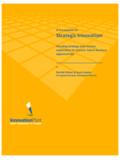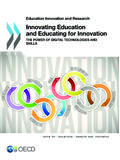Transcription of A background paper - Food and Agriculture Organization
1 AGRICULTURAL AND FOOD ENGINEERING WORKING DOCUMENT 2 Food product innovation A background paper AGRICULTURAL AND FOOD ENGINEERING WORKING DOCUMENT 2 Food product innovation A background paper by Ray Winger Gavin Wall FOOD AND Agriculture Organization OF THE UNITED NATIONS Rome, 2006 The Agricultural and Food Engineering Working Document disseminates findings of work in progress to encourage the exchange of ideas and experiences related to agricultural and food engineering within agri-food systems.
2 The series aims to bring the findings to the public domain as quickly as possible, even if the presentations are less than fully polished. The papers carry the name of authors and should be used and cited accordingly. The findings, interpretations and conclusions are the author s own. The designations employed and the presentation of material in this information product do not imply the expression of any opinion whatsoever on the part of the Food and Agriculture Organization of the United Nations concerning the legal or development status of any country, territory, city or area or of its authorities, or concerning the delimitation of its frontiers or boundaries.
3 All rights reserved. Reproduction and dissemination of material in this information product for educational or other non-commercial purposes are authorized without any prior written permission from the copyright holders provided the source is fully acknowledged. Reproduction of material in this information product for resale or other commercial purposes is prohibited without written permission of the copyright holders. Applications for such permission should be addressed to: Chief, Publishing Management Service Information Division FAO Viale delle Terme di Caracalla, 00100 Rome, Italy or by e-mail to: FAO 2006 iiiContents Acknowledgements.
4 Iv v Executive vi 1. 1 Outline of this 2. Product and process development .. 3 3 Key points ..5 Product development in the food industry .. 6 Key points ..8 Important factors in the product development process .. 8 3. Economic impact of food product innovation .. 11 Key points .. 15 4. Case 17 Flavoured fruit 17 Cassava processing .. 18 Milk for lactose-intolerant .. 18 New Zealand kiwifruit industry .. 19 5. 21 References .. 25 iv Acknowledgements The authors wish to acknowledge the contribution of case studies and some literature review material by Renske Asma, FAO Volunteer (AGST).
5 The critical review of the paper by Divine Njie, Agro-industries Officer (AGST), was appreciated. The assistance of Larissa D Aquilio (AGST) and David Ryde in the preparation of the document for publication is gratefully acknowledged. vForeword innovation through the creation, diffusion and use of knowledge has been recognised as a key driver of economic growth. Trends in agrifood systems are challenging farmers, produce traders, processors and other stakeholders to improve the efficiency of their operations and to be more responsive to consumer demands as well as regulatory frameworks.
6 In the case of high income countries their agrifood systems exhibit a high level of sophistication, but competitive pressures threaten family farm units and rural communities. Conventional wisdom suggests that their agrifood systems should focus on high-value products and not try to compete in commodity markets on the basis of price. In the case of low and middle-income countries a variety of circumstances exist. On one hand some billion people survive on less than $1 per day and 800 million are undernourished. Seventy percent of these people live in rural areas and either directly or indirectly rely on Agriculture .
7 On the other hand there exist agrifood systems that effectively meet the requirements of national and international markets and successfully apply technical and business processes. It is obvious that all countries face challenges in the evolution of their Agriculture . In each case the focus must be on fostering competitive agrifood systems that can provide income, meaningful employment, and food and agricultural products that meet the demands of the intended consumer or user. The Agricultural Support Systems Division is launching work to build the capacity of stakeholders to lead the development of policies and institutions that can foster competitive agrifood systems within their constituency.
8 This is expected to have two primary foci: supply chain management and commercial farming is one, the other is fostering product and agro-industry innovation . This working document on Food Product innovation is the first element of work related to the focus on innovation . Shivaji Pandey Director Agricultural Support Systems Division FAO vi Executive summary Major changes in demand for agricultural and food products are being fueled by growing populations, rising incomes, and changing lifestyles. These alter where and how food products are grown, processed and distributed; furthermore, new social and environmental concerns are bringing pressure for more change.
9 Demand, not supply, drives product offerings with technology tailoring products to meet consumer needs and sophisticated business models delivering them to the customer in a secure manner. In the food industry, just as any other industry, product and process development is considered a vital part indeed the lifeblood of smart business strategy. Failure to develop new and improved products relegates firms to competing solely on price which favours the players with access to the lowest cost inputs (land, labour etc).
10 The purpose of this paper is to provide a background context to discussions that will define further work in the area of agrifood system innovation . The paper defines Product Development as systematic, commercially oriented research to develop products and processes satisfying a known or suspected consumer need. There are four basic stages in every product development process. These are: product strategy development; product design and development; product commercialization; and, product launch and post-launch.


















